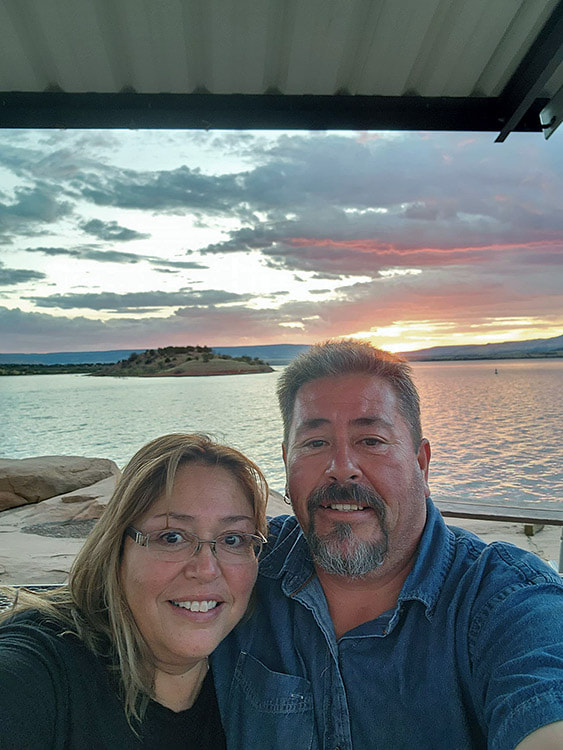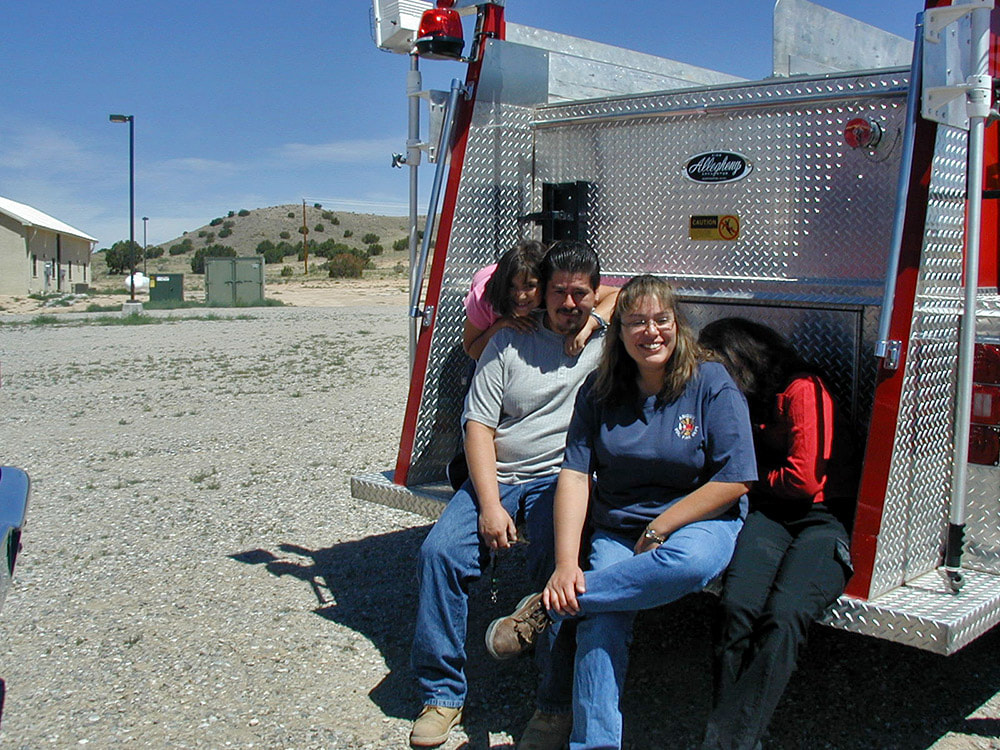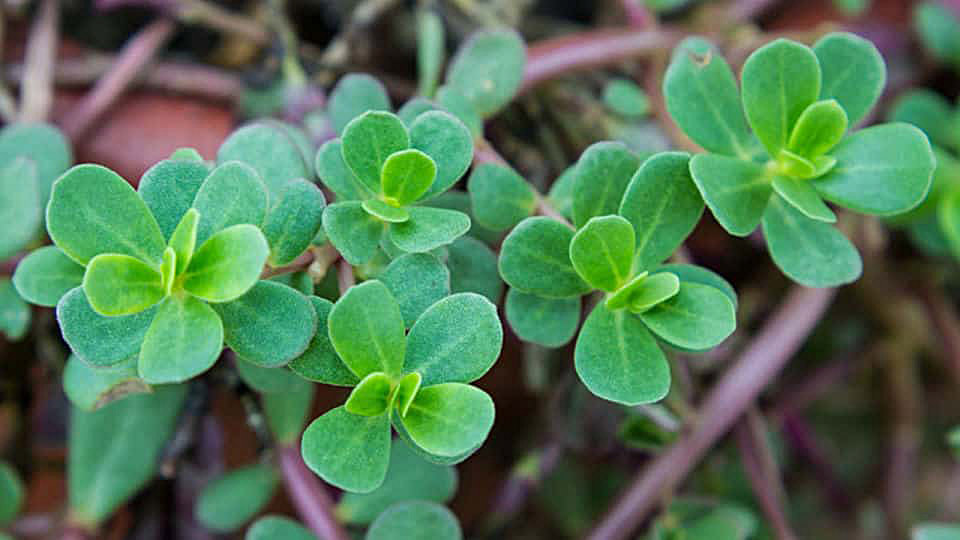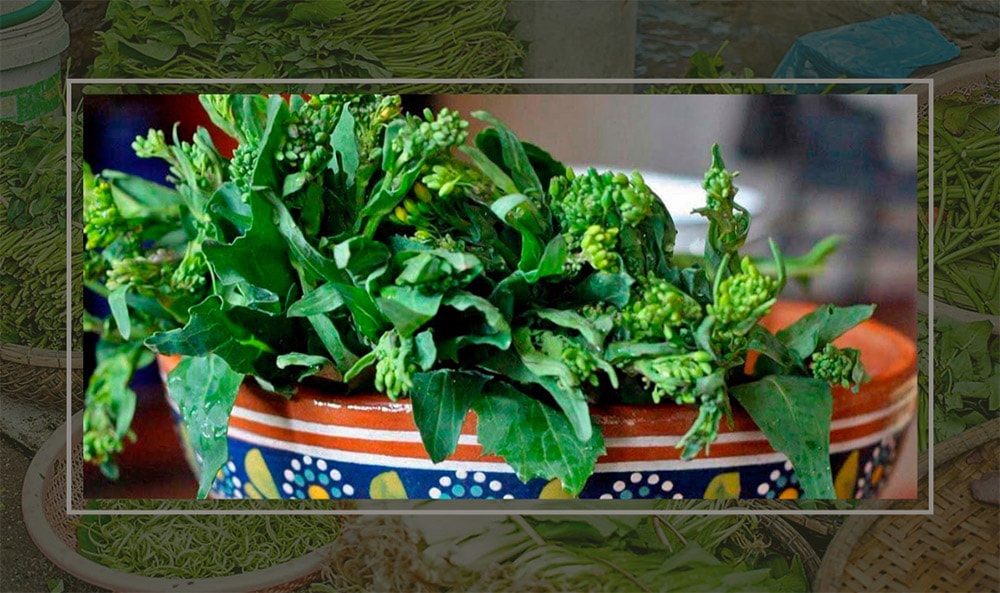|
By Jessica Rath According to Wikipedia, Abiquiú has a population of 181 people, based on the 2020 Census. Say what? That doesn’t sound correct; when I moved here in 2000 there must have already been many more, and since then I have witnessed a steady stream of new residents. How many people who live here now know what life in Abiquiú was like in the late 1970s, for example? I thought it might be interesting to interview somebody who was born and grew up here, and I asked my friend Lynn Jacquez whether she’d talk to me. I got to know Lynn when I was a volunteer with the Abiquiú Volunteer Fire Department, the only “Anglo”, from 2003 to 2009 if I remember correctly. Lynn was always kind and supportive, which helped a lot once I learned that most of the calls for AVFD involved traffic accidents, rather than fires. Lynn’s grandmother Angelina is a native of Abiquiu. Her grandfather's father came from Gallina and his mother was from Rio Puerco. They moved to Abiquiú in the early 1900s, and they had several children including her grandfather, Procopio Maestas who married Angelina Garcia. They had three daughters, Madgie, Mabel and Dulcinia (Dutsie). Lynn is Mabel's daughter, but she was raised and adopted by her grandparents, Procopio and Angelina. She has two brothers, Procopio and Antonio (who passed in 2019), she is married to Arnold Jacquez and has two daughters, Angelina and Mikeala, and four grandchildren: Jason, Unica, Jasiah and Natalia. Her upbringing was a bit different from the way the other kids her age were raised, it was more like children who were brought up in the old days, she told me. She lived with her grandparents from the time of her birth until they passed away in 1999. Lynn went through a dreadful experience when she was a young child: “In 1978, I believe it was November, our house caught fire. I was seven years old. I don't remember too much about that, other than the trauma of the house burning. I could see the smoke from the school because at that time the elementary school was just behind Bode’s house in the Pueblo. I could see the smoke. And one of my friends, Demetro, told me to look out the window because my house was on fire. I could see the smoke, and I was really scared, because I thought my parents were home. So I ran home, and a teacher’s aide followed me. I'll never forget her name: it was Helen Suazo. When we both got there, sure enough, the house was fully engulfed. I was crying for my parents. I didn't know where they were until somebody told me that my parents had gone for wood, so they were not home. Being seven years old, I didn't know what was going on!” Can you imagine the sheer agony the little child must have felt. Her whole world, everything that kept her safe and that she loved, symbolized by her parents, was violently ripped from her for a few moments. It must have felt like eternity. What a relief it was when she heard her parents were safe. I bet she didn’t care much about the house and all the stuff they lost as long as her parents were with her. Lynn continued: “At that point, we didn't have a fire department here in Abiquiu, and by the time the Espanola Fire Department came, the house was burnt to the ground, along with all our possessions and everything we owned.” “We were a very tight community back then, and if I remember correctly, my parents rebuilt their house in about six months. They own land near the river by Bode’s, and my father wanted to build down there, because they were having to deal with all the rubble and everything that was burned. But my Mom did not want to. She wanted to live where she had lived since they got married in 1945. I think they bought that place probably in 1946, shortly after they were married. The community came together and helped clear out the area and help build the house again”. And that was the beginning of the Abiquiu Volunteer Fire Department. Espanola was just too far away for an emergency like that. With donations from local residents including the late Georgia O'Keeffe, the first Abiquiu fire fighters under Chief Juan Lopez bought a Mac fire truck and built the old station in the village on land loaned from the Abiquiu Land Grant. One year later, the substation in Medanales was constructed. Lynn continued: “My parents were elderly, so Dutsie, Mabel, Madgie, and I took care of them until they died in 1999. My Dad died on March 20th of 1999 and my Mom on July 21st of 1999. My Mom died at home, and I was devastated, because there was nothing I could do; I didn't know what to do because I had no medical knowledge at the time. So in 2000 I joined the Fire Department, first as a firefighter, and then a year later, I became an EMT. I felt that that was a way of making up for not being able to help my Mom”. Lynn was a fabulous EMT. I often saw her in action at one of the frequent motor vehicle accidents or some other medical emergency. She quickly took charge and eased people’s pain until the ambulance arrived. It was no surprise that she decided to go to nursing school. She enrolled in 2009 and quit the fire department in 2011 because she was working full time, going to school full time, and had her children and family to take care of. When she graduated from nursing school she became an RN and has worked many jobs since then, as a home health registered nurse, and as the Director of Nursing at a nursing home. She’s currently working as a hospice nurse. Lynn specified: “As hospice nurses, we care for patients in the comfort of their homes. Hospice care focuses on quality of life, dignity, pain and symptom management for those who no longer are receiving curative treatment. As a hospice nurse my responsibility is to provide symptom management, emotional support, provide education, coordinate care and advocate for my patients”. “The frequency of nursing visits depends on the acuity of the patient, and visits range from one day or two days per week to daily visits. It's a very rewarding job, because you're not only providing comfort and supportive care to the patient, but their families as well. I currently work for Del Corazon Hospice in Santa Fe. The staff at Del Corazon are a caring and supportive team of nurses, physicians, nurse practitioners, social workers, chaplains, hospice aides and volunteers. We support each other and we support our patients”. I asked Lynn about her childhood in Abiquiú – what was it like to grow up in the village? “Oh, it was great back then”, I learned. “You didn't have to lock your doors. You didn't have to worry about anybody. We would go out trick-or-treating, we would walk everywhere we wanted to. These days, you gotta drive your kids trick-or-treating and everywhere else. It was a very tight-knit, family oriented community back then; everyone knew you and you knew everyone, and everyone helped each other out. It was beautiful”. When I moved to Abiquiú in 2000, from Berkeley, California, I remember that my neighbor, the potter Dick Lumaghi, left the car keys in his car. I had never heard of anything like that, coming from a big city. I must have experienced the last remnants of that carefree time, and I asked Lynn about it. “Yes, you used to be able to leave your car keys in the car”, she confirmed. “You left your car unlocked and your door unlocked. My parents always left the doors open and unlocked. People came to your house, they knocked and walked in, there was no fear back then”. I wanted to learn more about Lynn’s upbringing. “You said you were raised by your grandparents, and that it was a bit different from other kids. Were they more strict, or were they more old fashioned, and in what sense?” I asked. “Well, you worked. You got up early in the morning, you made your bed, you went to school, when you came back from school there was always something to do”, Lynn told me. “My parents always had a garden, so in the spring and summer time that's what we were out there doing. My Dad (Grandpa) never had boys. He had three daughters, who were out there helping him with the cattle, ranch, and garden. As they had children, it was up to us, the grandchildren, to help as well.” “Were there any stores up here in the village?” I wanted to know. “When I was growing up, there was Bode’s Mercantile and the bar. My parents owned the bar that was next to the church. I remember sitting behind the bar all the time. I remember being small enough that I could sit on top of the bar, on the counter. There were many memorable moments but the one that is unforgettable was a gentleman, his nickname was Sarge, he was one of the regulars. He had false teeth, and as soon as he'd walk in the door and see me he'd push his teeth out with his tongue. I thought it was the neatest thing at that age, I might have been four or five years old, I'd sit there for hours trying to pull my teeth out, because I thought it was the greatest thing ever, and I wanted to do the same”. I had a good laugh, imagining little Lynn trying to wiggle her front teeth. “There was a lady who lived across from the bar, she used to make the best tamales. My Mom would give me money, and I'd run across to her house and buy tamales all the time. I think she sold them for 25 cents or 50 cents a tamale. They were the best”, Lynn remembered. Do people still make them, I wanted to know. “I do”, Lynn confirmed. “I make them once in a while, around Christmas time. And I make empanadas, also. My Mom used to make tamales and empanadas for the holidays. I hadn't made tamales in years, until this past Christmas when I made both tamales and empanadas, just the way my Mom used to make them. We make them with beef, not tongue as a lot of people do”. Next, Lynn told me about her knowledge of plants and herbs which she had inherited from her elders. “When I was a kid we used to pick our own herbs, and we used to pick guaco. I don't know if you've ever heard of guaco, it is like spinach. It grows tall, has thin, long leaves, and when it matures, it gets a pink flower at the top. Native Americans used the plant and flower for dying their wool, but we would pick it before it flowered, and my Mom would cook it with fiero (iron) bolts that my dad had brought her. The purpose of the iron is to neutralize the bitterness. Guaco has a very bitter taste, but if you cook it with iron” – I had to interrupt her. “Hold it – you mean real iron bolts? I thought you were talking about some vegetable?” “No, no, real iron bolts. You boil it with the iron in the pot and it neutralizes the bitterness, it tastes really good”. I had no idea! “And we used to pick verdolagas – purslane? It's a little plant with little tiny leaves, it grows everywhere, and we would also pick quelites, that's wild spinach. I haven't seen quelita in many, many years, but there's still guaco, and there’s still verdolagas”. “Up in Vallecito – back here in our Vallecito – we also picked oregano. And we would pick yerba del manso in Barranca, that's an herb for stomach issues, cough and colds, and mucous production. These are the things that my Mom grew up doing, and she passed it on to us. I still pick herbs, I still pick cota, or Indian tea, it grows all along Hwy 84 and 96. It's good for the bladder”. Lynn explained that the children would learn this from their elders. They learned that all these herbs and plants are useful, they learned what to do with them and what they were for. What a wonderful tradition. “We also picked poleo and yerba buena, peppermint and spearmint. We got the poleo in Youngsville at my aunt and uncle's house, and also yerba buena. When you were not feeling well or when you had a cold, you drank all these herb teas to get better”, Lynn went on. “Some other herbs we collected were manzanilla (chamomile) and alucema (lavender). My Mom used to give that to the babies when they had colic, and that's what I do with my kids and with the grandkids. We make teas for fevers. Arnold taught me to use coffee and salt for fever. You rub the warm coffee with lots of salt on the person, it helps to break the fever quickly”. Lots of things have changed since Lynn was a kid. People don’t leave the keys in their cars any more; newer cars don’t even HAVE keys. But it’s good to know that the tradition of gathering herbs for teas and wild greens for salads is still alive. Young people don’t learn things like that at school, but I want to believe that knowing about plants and their benefits form an important counterpoint to our increasingly technology-driven culture.
Thank you, Lynn, for taking the time to talk to me! It was a lovely afternoon.
13 Comments
Jessica Rath
11/14/2024 09:04:47 am
Thank you for the nice comment.
Reply
Nancy Coble
11/8/2024 01:33:01 pm
Lynn, thank God for sharing your story of growing up in Abiqui. I use to go to Ghost Ranch every year and go to Bodes almost everyday for drinks and ice cream next to Bodes. Also, ride up to the church at Abiqui and to the White Place! Love, Nancy Coble, Greensboro, N.C.
Reply
Jessica Rath
11/14/2024 09:06:43 am
I'm glad you liked the article, Nancy. I hope you'll return to Abiquiú.
Reply
Martin Herrera
11/13/2024 08:54:03 pm
Lynn thank you for the great story. It brought back alot of good memories. There are alot of traditions during the Christmas season that are also very special to me. Good job Lynn!
Reply
Salena Vela
11/13/2024 09:03:42 pm
This was a great read! Thanks for sharing some stories from hometown Abiquiu. Many of us have grew up there and forget how wonderful the town is and how close the people from there are. Thanks for sharing. I look forward to seeing more of these from the people of Abiquiu. .
Reply
Jessica Rath
11/14/2024 09:10:14 am
Thank you, Salena! I'd love to interview other Abiquiú natives. If you have any suggestions -- please email [email protected].
Reply
Daria Roithmayr
11/14/2024 04:51:14 am
This was FABULOUS! I recently learned about Procopio Maestas and the land his family owned, so it was even more wonderful to read about Lynn and her family. I especially liked learning about local plants and herbs from Lynn. Please do more of these!! Abiquiu traditions and the town's cultural and social history are at the heart of what makes our community so special.
Reply
Jessica Rath
11/14/2024 09:18:17 am
Thank you, Daria! Yes, I agree, it's so important to preserve the cultural traditions and their stories. I'm so grateful for Lynn having talked to me, and I hope I'll find more people willing to share what it was like growing up in the Pueblo.
Reply
Wenche
11/14/2024 08:54:03 am
Such a beautiful article. We could not have gone through these last few months without all your help. You are such an amazing person. Thank you so much. We love you. Wenche
Reply
Wenche Zimmerman
11/14/2024 08:57:41 am
Thank you so much for all your help and support these last few months. We could not have done this without you. Such a wonderful article. You are amazing. We love you.
Reply
Lynn Jacuez
11/18/2024 04:53:29 pm
Thank you all for the kind comments!!
Reply
SirJane
11/29/2024 01:47:43 pm
My beautiful sister in law, she’s taught me so much ! I just love her!
Reply
Your comment will be posted after it is approved.
Leave a Reply. |
Submit your ideas for local feature articles
Profiles Gardening Recipes Observations Birding Essays Hiking AuthorsYou! Archives
October 2025
Categories
All
|










 RSS Feed
RSS Feed